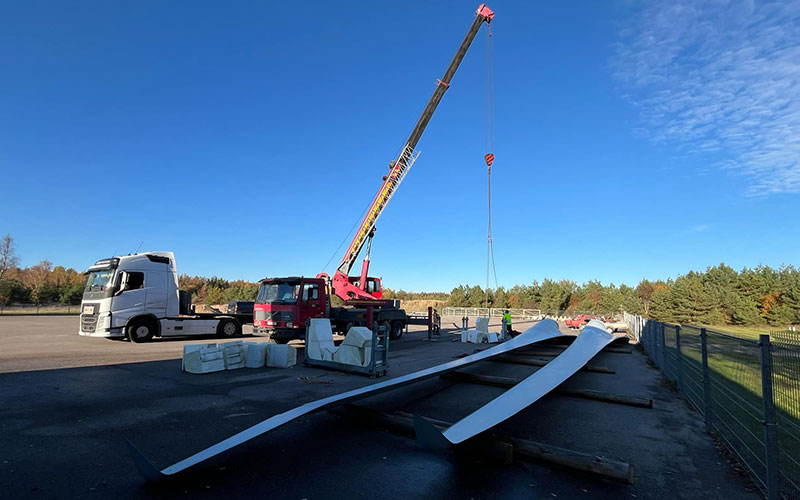Enefit Green handed over two wind turbine blades for educational purposes to Kuressaare Regional Training Centre
Two wind turbine blades, sourced from the Virtsu wind farm, have arrived at the courtyard of the Technology Beacon building of Kuressaare Regional Training Centre. These blades will be used in the training of wind turbine blade maintenance specialists, which is set to begin in the fall of 2025. They will serve as essential tools for practical exercises in material handling.
The rapid development of the renewable energy sector brings with it the need for the creation of new jobs. Sectors that play a significant role in today’s economy, such as energy, construction, and industry, cannot function without the contribution of local youth. To fully capitalize on the opportunities presented by wind energy and to ensure the effective and safe operation of wind turbines, it is reasonable to teach wind energy-related courses locally in Estonia and essential to train local wind turbine technicians.
According to Mairold Vaigu, the project manager for the development of wind turbine technician training at Kuressaare Regional Training Centre, no educational institution in Estonia currently offers comprehensive training for wind turbine blade maintenance technicians at the vocational education level: “Most of today’s maintenance technicians have been trained on the job or through training provided by private companies or trainers outside Estonia, and we aim to change that. The Pärnu County Vocational Education Centre began training wind turbine technicians in September this year, and together, we will work to meet the workforce needs of companies in the wind energy sector in Estonia.”
Innar Kaasik, member of the management board of Enefit Green, said: “The growth potential for wind energy is significant, especially in our coastal areas, but increasingly also in Estonia’s inland areas, and future potential is tied to offshore wind farms. The demand for qualified labor in the sector is continually increasing. Technicians capable of installing, maintaining, and repairing wind turbine systems are essential. A practical approach to training supports the education of young people and helps ensure that Estonia has a sufficient pool of skilled workers. Training young people within the community strengthens the community, encourages young people to stay in their home region, and supports local development.”
“The blades provided by Enefit Green are the first to arrive at our school’s courtyard, and we are allowed to cut them for use in training. Additionally, there are plans to hang part of a blade from the ceiling of the future workshop building, so students can practice working on it while suspended, simulating high-altitude tasks. Such tasks need to be practiced carefully to ensure safety and to prevent future workers from overstraining their bodies with improper techniques,” Vaigu explained.
Kuressaare Regional Training Centre will open its doors to students in September 2025, with the first cohort set to go on practical training and enter the labor market in 2026. The initial group size is planned to be 12 people, with plans to increase the number of admitted students in subsequent years.

